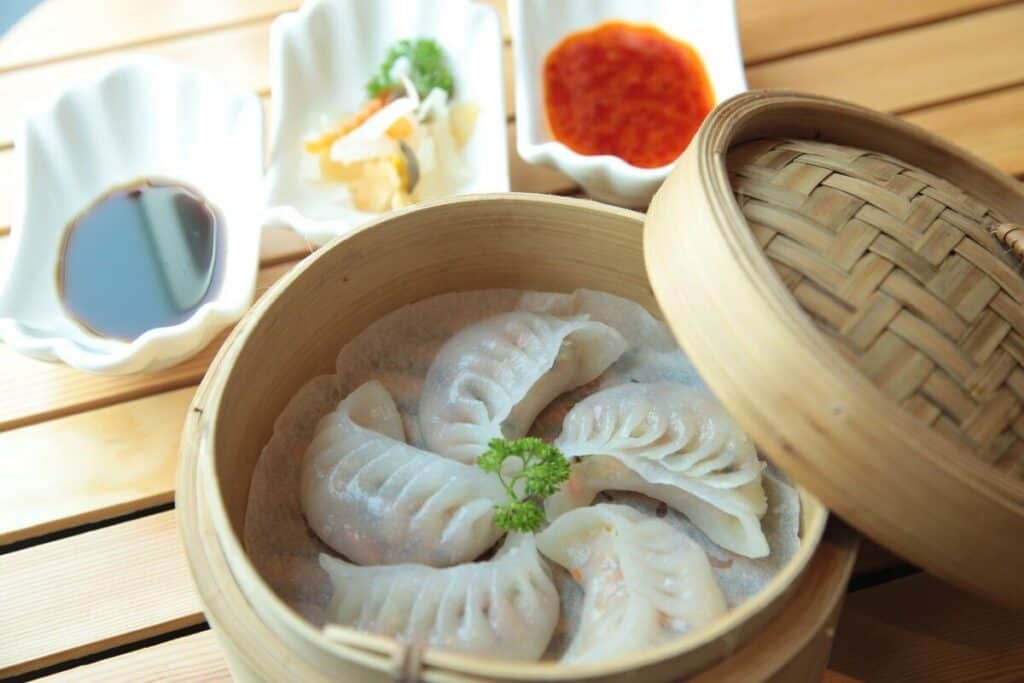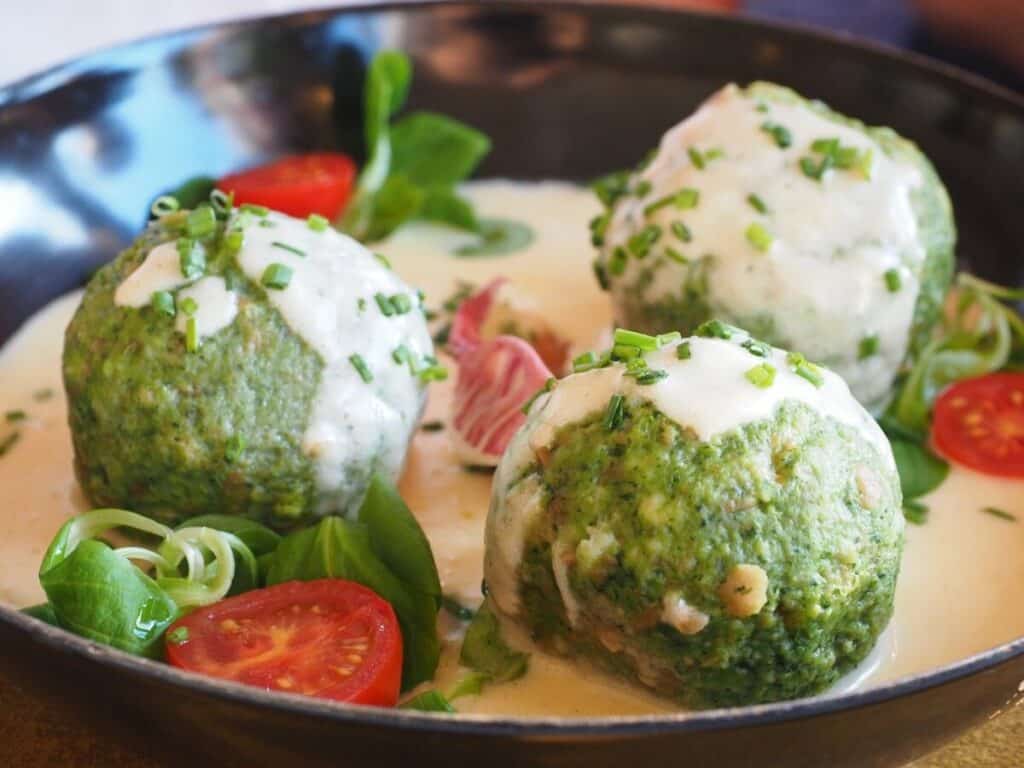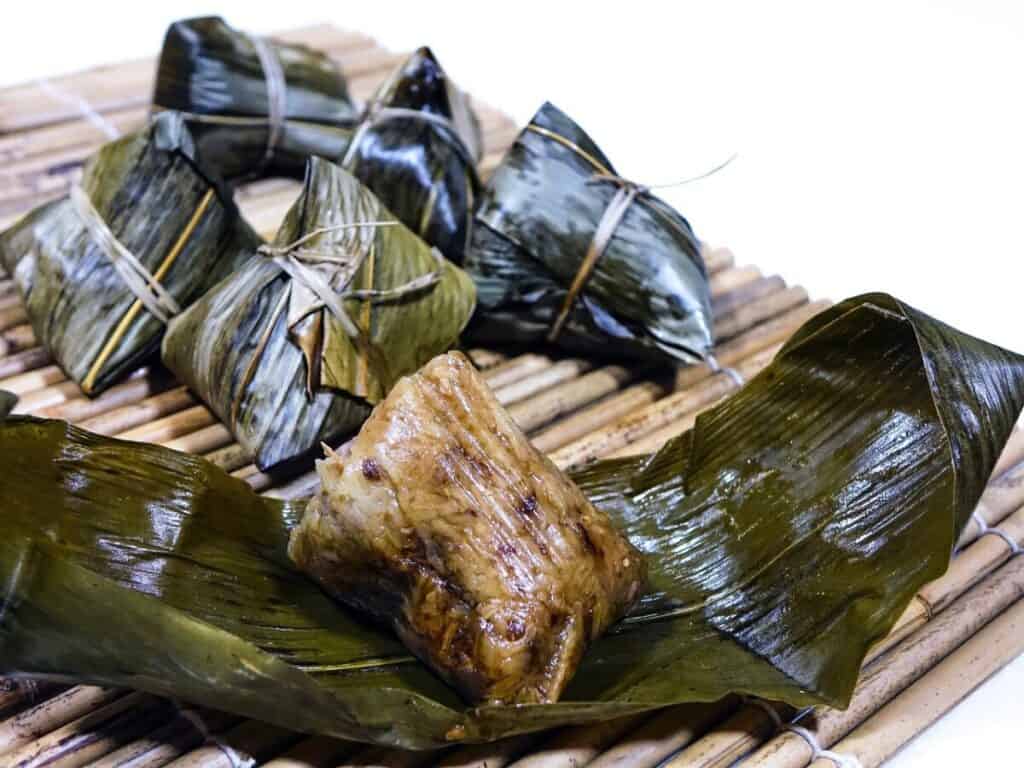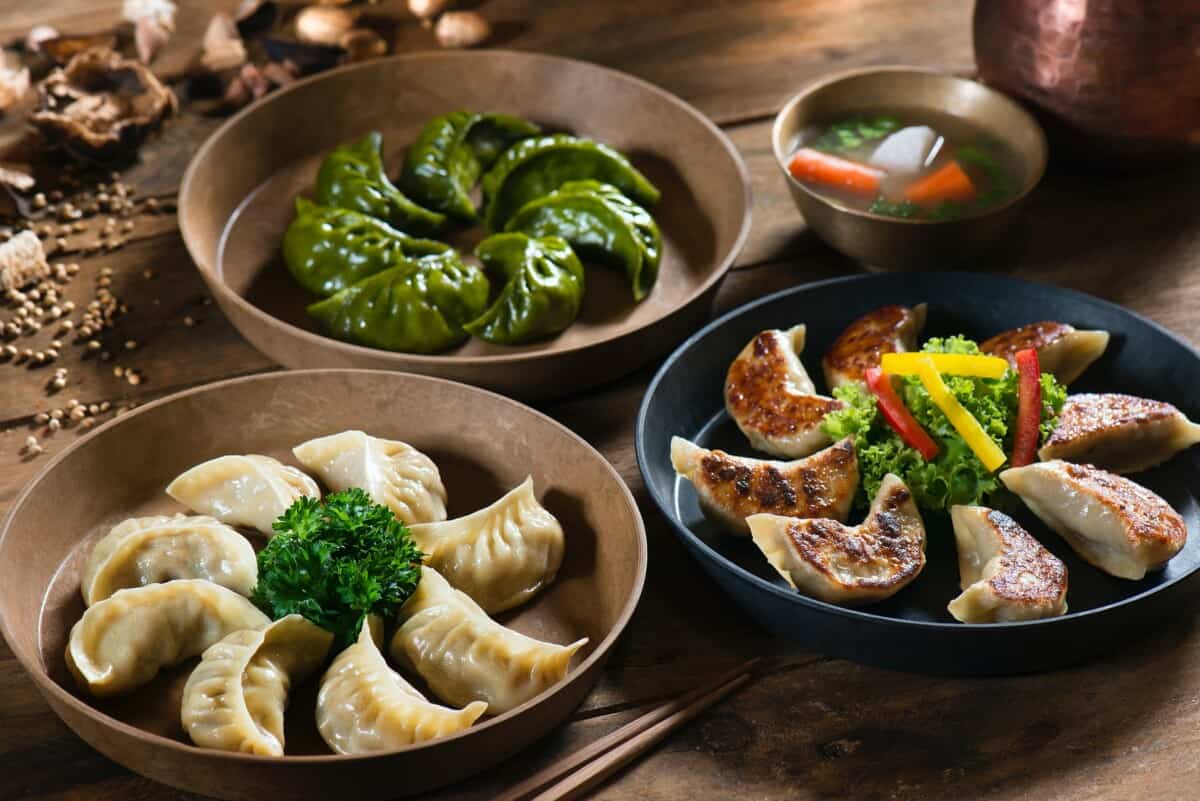What Are Dumplings?
Dumplings are delicious bite-sized nuggets native to Asian countries but popular all over the world. There is no one specific way to make a dumpling, since the recipe, ingredients and style of cooking changes from place to place. Despite the huge classification, the idea of the dish is universally the same.
A filling is wrapped by a piece of starch-based dough and then cooked (steamed or fried). The fillings come in a wide range, usually determining the flavor of the dumpling. Few of the most common types of fillings are- vegetables, grains, tofu, cheese, meat, sweets and fruits. The dough used to wrap the filling is generally made from rice flour, bread, wheat flour, potatoes, or other starchy food sources.
Like the ingredients, there are also innumerable ways to cook the dumpling, depending on the origin of the cuisine. Though it is interchangeable, authentically, different places resort to different cooking styles, a few of them being, baking, frying, boiling, roasting, steaming or even simmering.

Different Types Of Dumplings
Like we mentioned earlier, dumplings cover a plethora of possible outcomes. Each country has its version of a dumpling and has named it differently, although it is debatable that a couple of recipes are similar, despite originating from different countries. Some of the most well-known dumplings are a part of South-East Asian, Central Asian, European, Chinese and Indian Cuisines.
The Nepalese people came up with the commonly known vegetable-based dumplings people across the world have been fond of. Originally called the Tibetan region centuries ago, the taste and essence kept changing with time and distance. Termed as “Momos” in Nepal, they are also identical to what the Chinese call “Jiaozi”, or the Turkish “Manti”. The Manti is widely recognized in all central Asian and Middle Eastern countries.
All these variants are extremely similar, with a slight change in the type of fillings used. They use various types of fillings, potatoes, mixed vegetable, tofu, meat, cheese, etc. The dumplings in Nepal were usually veggies or cheese-based, while the Chinese and the Turkish people usually consumed meat-based dumplings. The vegetable dumplings were made using a type of vegetable fat called “suet”.
The American dumplings are heavily inspired by European and Chinese cuisines. The spicy dumplings are similar to calzones or pizza rolls, though Americans love the sweeter baked dumplings as well. This is done usually by baking a fruit tart with a pastry as the outer layer. British and Irish folks too, have their version, usually baking a ball of dough with filling in between.
They are usually drooped into a bubbling pot of stew or any soup. The dough balls are seasoned with salt and spices, and may or may not use any vegetable fat (suet). They alternatively use some flour and some rising agent for the dough.
In India, there are multiple different dumpling recipes, each tasting very different from others. Some are spicy, some are sweet, some crispy and some soft. Momos are also quite famous in India, especially in its northern parts like the Himalayan region. Like most Indian foods, the Indian momos are spicier, thanks to the addition of native Indian spices and herbs. Another version of dumpling called “Kozhukattai/Kadabu” is famous in south India and is a festive delicacy.
The dough is made of rice flour and the fillings range from, chilies, spices, vegetables, lentils for the spicy variants, to coconut, jaggery, etc, for the sweet dumplings. They also prepare samosas and kachoris which are savory snack-type dumplings, which are extremely different from the rest of the dishes mentioned in the list. Apart from the obvious recipes, like “chicken momos”, most of the Indian Dumplings are vegetarian friendly.

How To Prepare Vegetarian Dumplings At Home
Firstly, we provide you with a simple recipe of vegetable-based dumpling you can try at your home. This recipe is simple, easy to prepare and vegan friendly. Hence, it caters to a wide audience of food lovers. But you don’t have to follow the recipe as it is. You can play around with the ingredients used for either the dough (or wrapper) or for the fillings. We have provided you with some delicious alternatives, at the end of the recipe. Let us start with the list of all the food supplies and groceries you need to make the dumplings.
Ingredients
(Note: The quantities mentioned are for making roughly 15 vegetable dumplings. If the quantity you want to prepare is more or lesser than 15, alter your rations accordingly)
Ingredients for Dumpling Wrappers:
(For homemade wrappers; these can also be purchased readymade from your nearby stores)
- 1 cup (150g) of all-purpose flour
- Pinch of salt
- ½ cup of boiling water (100ml)
Ingredients for Vegetable dumpling filling
- A drizzle of olive or avocado oil
- ½ tablespoon of minced ginger
- One peeled and minced garlic clove
- 2 cups (100g) of shredded cabbage
- 1 cup of mashed potatoes (100g)
- ½ cup (50g) of freshly chopped spring onions
- ½ cup of shredded carrots
- 1 tablespoon of soya sauce
- a few drops of sesame oil
- salt and grounded pepper for seasoning
Dipping Sauce (optional, generally most dumplings are served with a sauce on the side)
- Two tablespoons of soya sauce
- 1 teaspoon of vinegar
- 1 teaspoon of sesame oil
- 1 clove of minced garlic
- ½ unit of green onion (finely chopped)
- Half a teaspoon of black pepper or red pepper flakes
Cooking Instructions
Step 1: Preparing the dough/wrap
- Mix the all-purpose dough with salt in a large bowl. Pour the boiling water into it, and stir the mixture with a spatula or wooden spoon. Continue to stir till the entire water is absorbed, and it forms a crumbly mixture.
- The next step is to knead the dough. Empty the contents of the bowl into a clean flat surface first. Now, knead the dough for roughly ten minutes, until it is soft and has a smooth texture.
- Shape the dough, as per your requirement. Make them into flat round discs. You can either cut out the discs from a large flat layer of dough or roll them into small balls of dough and press them. Make sure the dough is uniformly divided into about 15 discs.
- Place them aside for about twenty minutes, and prepare the vegetable fillings in the meantime.
Step 2: Preparing the vegetable fillings
- Place a large wok or another similar cooking pan over the stove. Add the oil and heat for a few minutes over medium heat.
- Add the ginger and garlic for stir for a few seconds. Add the cabbage and sauté it till it begins to wilt and shrinks down.
- Add the potatoes, green onions and carrots. Pour the soya sauce and sesame oil and stir the contents, till the liquid begins to evaporate.
- Season the filling with salt and pepper. Be wary of the amount of salt you add (keep it to a minimum) as the soya sauce tends to make it already a bit salty.
- Transfer the contents into a bowl or a container from the wok, and it is ready to be stuffed inside the dough.
Step 3: Rolling/Stuffing the dumplings
- There are multiple ways to fold a dumpling. There are a few simple straight forward ways and a few complex but artistic ways to roll the dumplings as well. Everything about this step comes down to aesthetics. The difference is observed in the final shape of your dumpling.
- You can find several ways to wrap a dumpling online. The simplest way is to place the vegetable filling in the middle of the circular dough disc. Do not overfill it, as it becomes difficult to close the dumpling.
- After you place the filling at the center of discs, you can get two easy shapes. You can either fold the disc in half to form a crescent or a semi-circle and then pinch the edges together, to seal the dumpling.
- Alternatively, you can pleat the sides of the disc, to form a cone. Pinch together the top of the cone to seal the dumpling. This method is more like filling up a bag and then tying it shut on top.
Step 4: Cooking the dumplings:
Like the wrapping technique, there are also several ways to cook the dumpling. Although all techniques taste similarly, the difference is noticed in the texture of the dumplings. The choice of cooking method changes from whether you prefer a crispy variant or a soft steamy variant. You can try any of these methods or all at once and serve your guests a mixed platter.
- Steaming: You can steam the dumplings in a rice cooker, a vegetable steamer basket or even in a bamboo steamer. Place the dumpling over a banana leaf or a parchment paper, so that it doesn’t get stuck to the steamer. Place the dumplings at a distance from each other, so they don’t stick to each other while heating. Place the steamer over a pot of boiling water or a wok, and heat for a minimum of ten minutes. You can leave the dumplings inside the steamer until it has to be served.
- Pan-fried or Gyoza: Gyoza is an authentic Japanese way of cooking dumplings. Pour about two tablespoons of oil into a non-stick pan. Medium heat the pan for a minute or two. Once the oil is hot enough, carefully place the dumplings on the pan and heat for a minute or two till the bottom of the dumpling turns golden brown. Then, pour about four tablespoons of water into the pan. Cover the pan with a lid and steam the dumplings for about eight to ten minutes with low heat. Wait till most of the water vaporizes. Now remove them and serve the dumplings hot, along with some dipping sauce.
- Oil Fried: You can either fry the dumplings over an air fryer or in a wok. Pour around two cups of olive oil into the wok. Heat the wok over medium flame for around ten minutes. Once the oil is hot enough, carefully (slowly) drop the dumplings into the oil. Deep fry the dumplings till they turn golden brown. Place them into an oil strainer till the excessive oil drips out. The dumplings turn out to be crispy on the outside.
Step 5: Dipping Sauce
- There is so much flexibility in the type of sauce or dip you can have on the side. Even if you cannot prepare an authentic dipping sauce, you can make do with some tomato ketchup, cheese dip or mayonnaise on the side.
- We provide you with the cooking instructions of a tasty cooking sauce which complements the dish, but you can find quite a few other recipes online too.
- For the recipe we have provided, there are these various flavors we try to incorporate into the sauce- salty, sweet, spicy, and a little bit of tang, or sourness.
- It is not necessary to make the sauce, but it hardly takes a few minutes and elevates your dumpling taste journey to a whole new level. Mix all the ingredients we mentioned for the dipping sauce above, and stir till it forms a uniform consistency, and you can use it right away.
- The base of the dip is soya sauce, which provides the saltiness and needs a little bit of thinning out. This is achieved because of the hot water. The sweetness and sourness come from the sugar and the vinegar respectively. The spiciness comes originates from the addition of chili.
- The raw ginger and garlic give additional spice and the flavor to the sauce. There are added benefits of ginger and garlic. Ginger is an anti-inflammatory and garlic is rich in antioxidants. All these factors come together, to bring you a delicious and flavorsome side dip.
Step 6: Serving
These vegetable dumplings are best served when hot. Serve about 5 to 6 dumplings in a plate with a side of mayonnaise, or chilli sauce or the authentic sauce recipe we shared with you.
If you decide to make a sweet filling instead of the vegetables, and additional sauce wouldn’t be necessary.
Alternate Vegetarian Fillings For Dumplings
There are multiple vegetarian fillings you can substitute the vegetables with. You can replace them with some cheese or tofu. These dumplings are chewier in texture. If you use tofu, additional spices or other ingredients like beans or peas should be added into the mix as tofu alone is flavorless.
To make sweet dumplings, you can use a mix of jaggery, lentils and grated coconuts. A healthy dumpling you can try is adding some steamed sprouts to the vegetables. In the original recipe, you can also replace the potatoes with some mushrooms. Any edible mushrooms will do but prefer to use Portobello or Shiitake mushrooms.
Alternate Dough Ingredients For Dumplings
Despite being the best and easiest way to make the dough, if you can very health conscious or prefer gluten-free alternatives, use rice flour instead. You can also buy vegan gyoza wrappers from the store, which makes the process much more simplified for you.
Different cuisines around the world use a wide variety of flours like- semolina, whole wheat, lentils, washed gram flour, etc.

5 Tips To Make Your Dumplings Better
- For gluten-free wrappers, combine rice flour and baking flour and use them instead of all-purpose flour. Use xanthan gum as a binding agent. Add some water and salt and mix the dough mixture. We would advise you to stick to the regular recipe, because the gluten-free dough, doesn’t bind as good as the regular one. So, there are chances for your dumplings to crack.
- If the dough is still crumbly after adding the water, just wet your hands with some water and then knead the dough. Mixing the water with your hand instead of adding more water directly will make your dough too sticky.
- If you don’t know how to split the dough into about 16 equal parts, just split the entire kneaded dough into two halves (use a knife to cut if needed). Split the two halves into four, four into eight and eight into 16 halves. This way all your dumplings will appear to have a uniform overall size.
- Cover the dough with a plastic cover on top. Don’t keep the freshly kneaded dough, exposed to air for too long. Once you make the discs of dough, don’t stack them one over the other, as they may end up sticking together.
- Nutritionally speaking, the healthiest way of cooking is by steaming the dumplings. But the pan-fried version is almost identical (a tad higher) in terms of calories per dumpling. Hence if you don’t like your dumplings soft (steamed), and prefer it to be crispy, pan-frying is much better than regular deep frying. You can significantly cut down your fat and cholesterol content.

